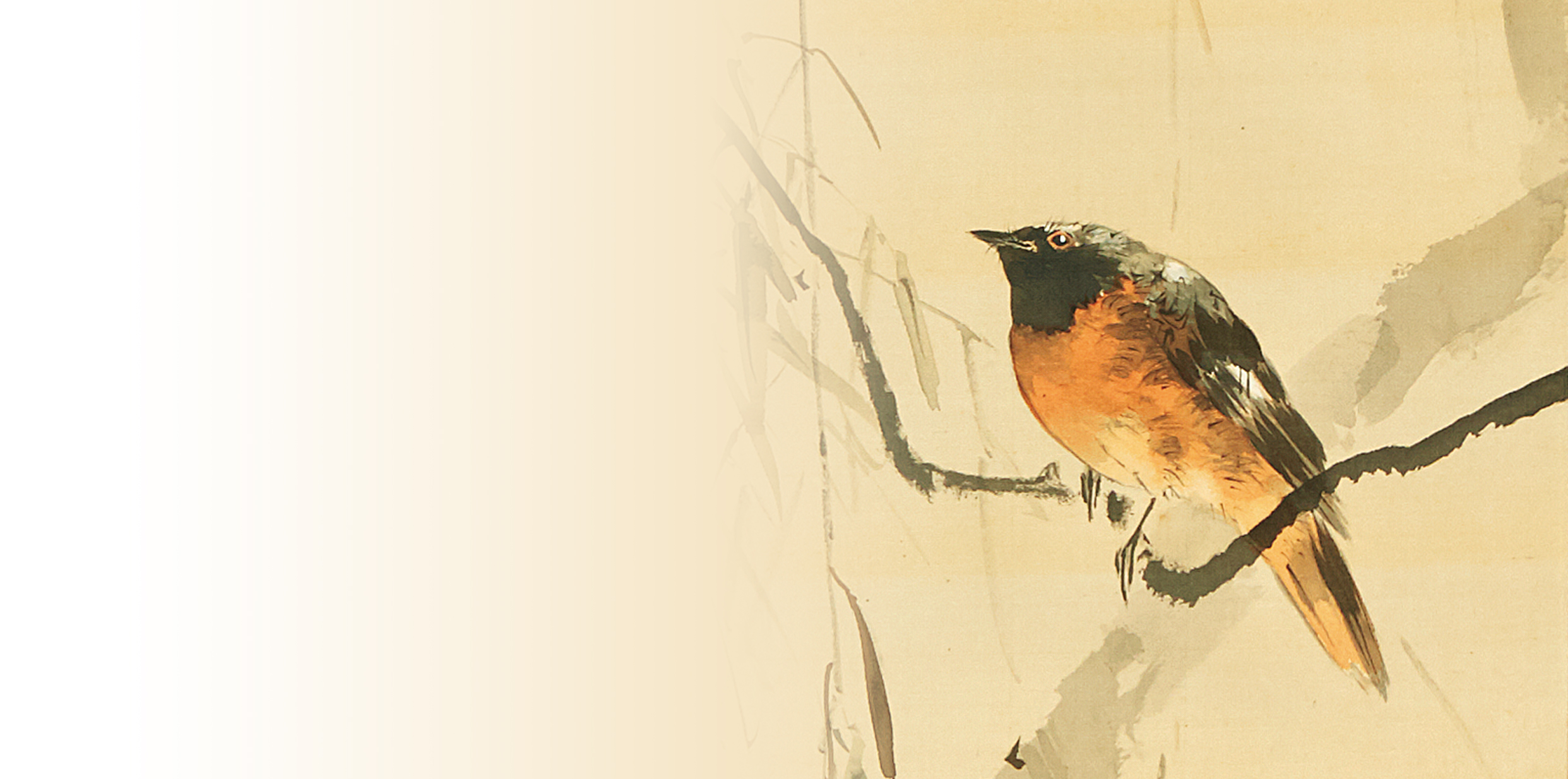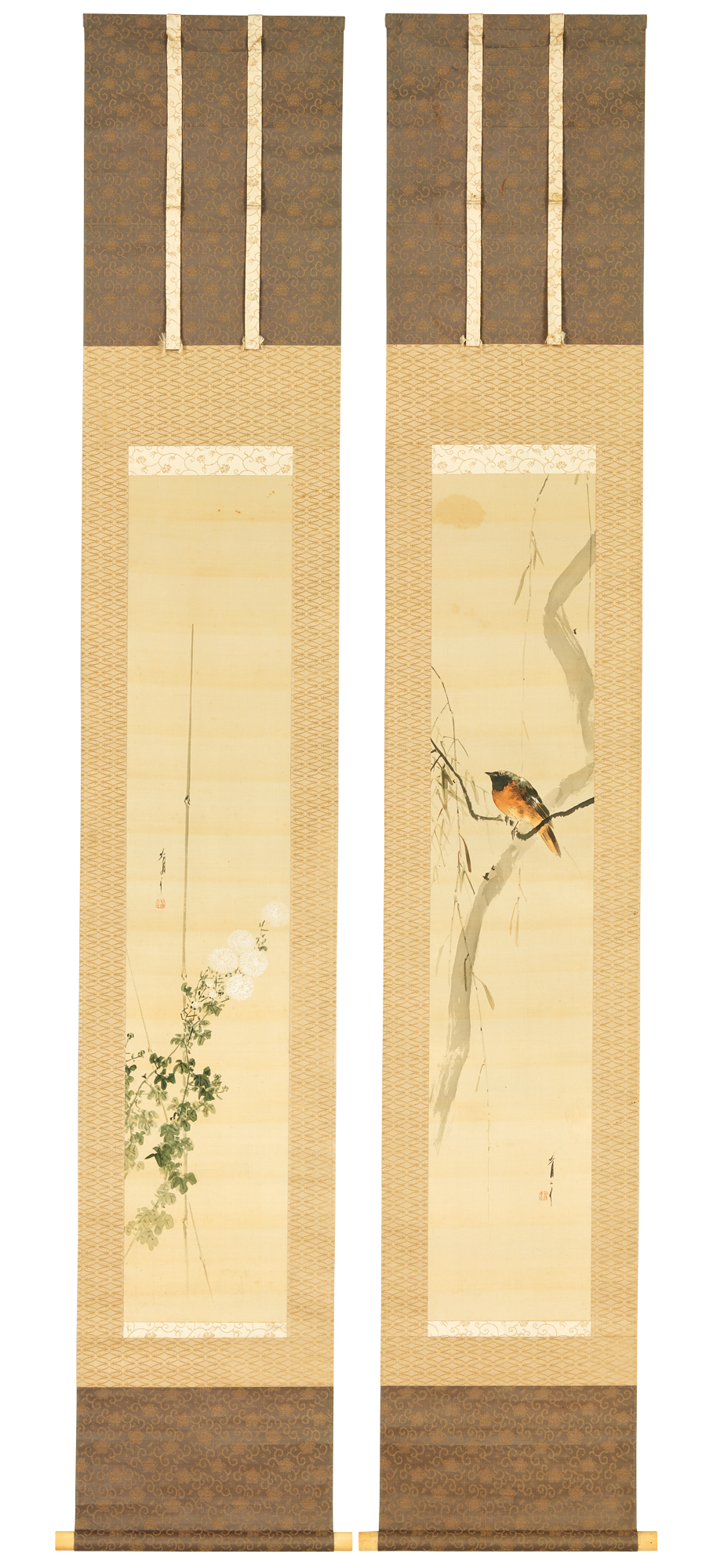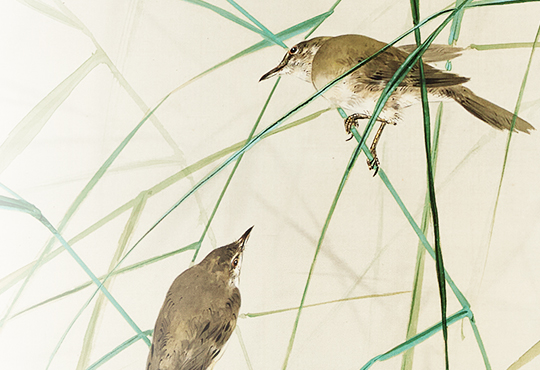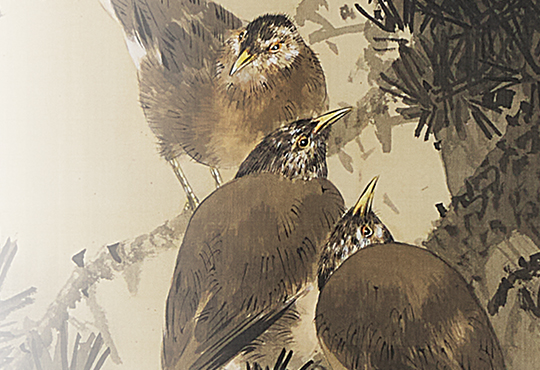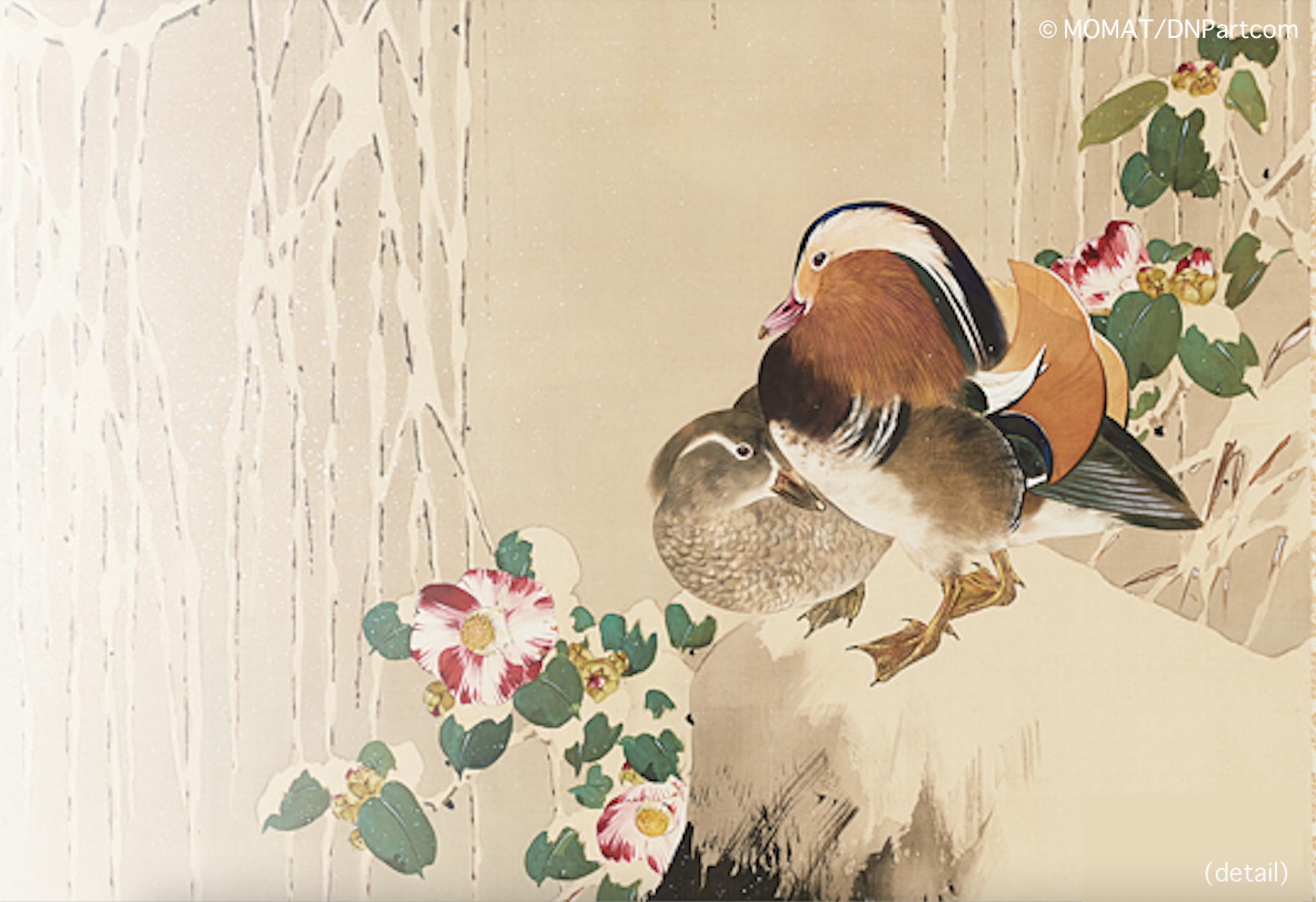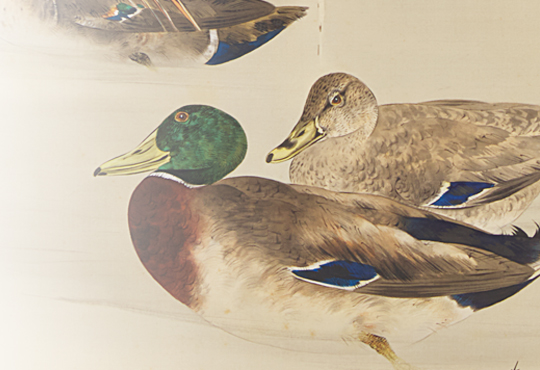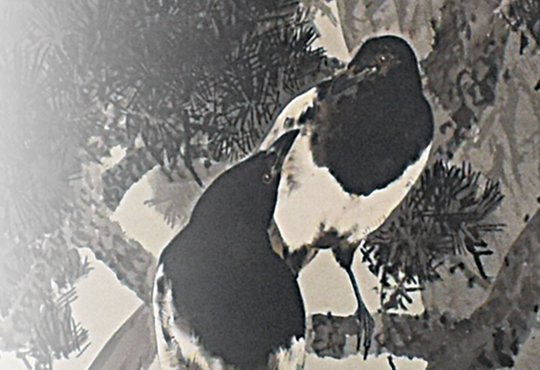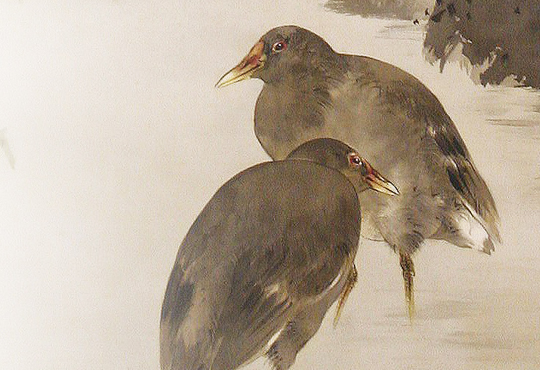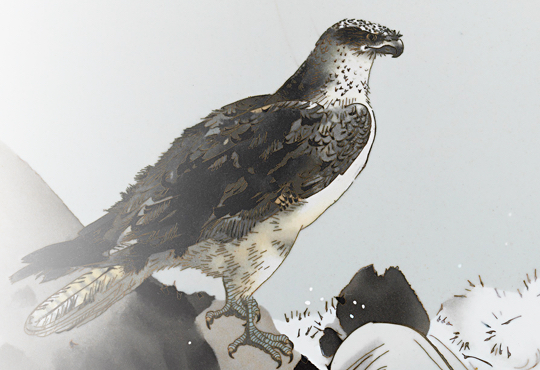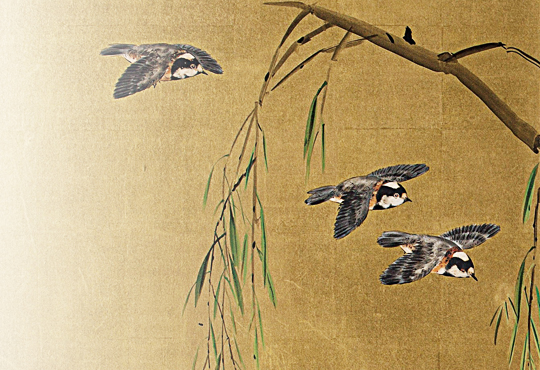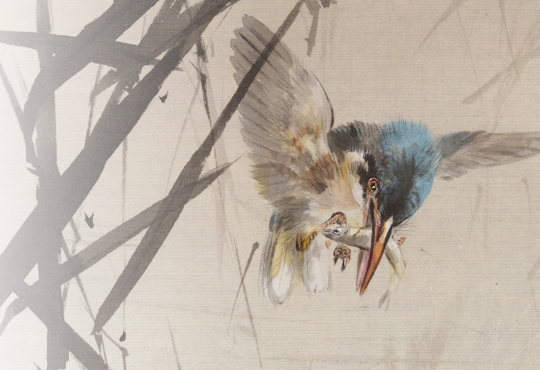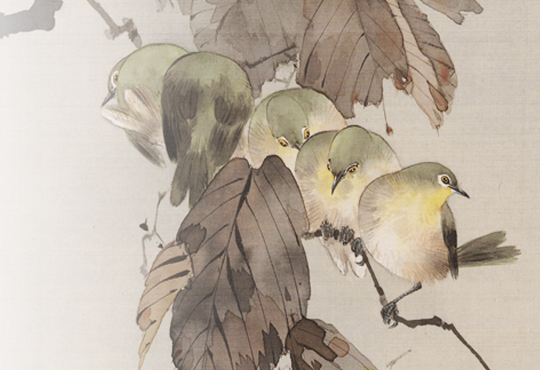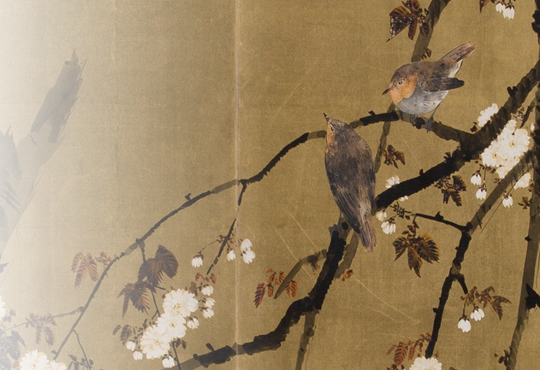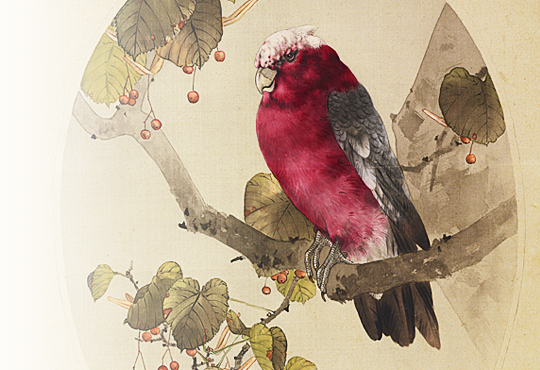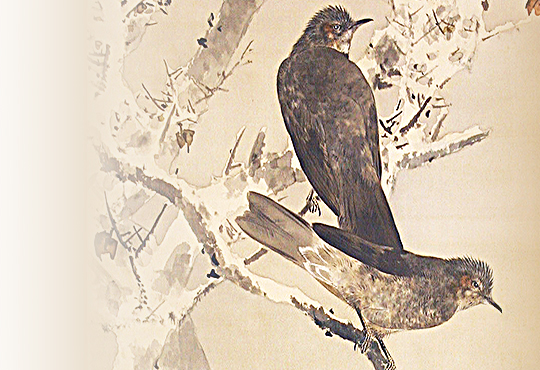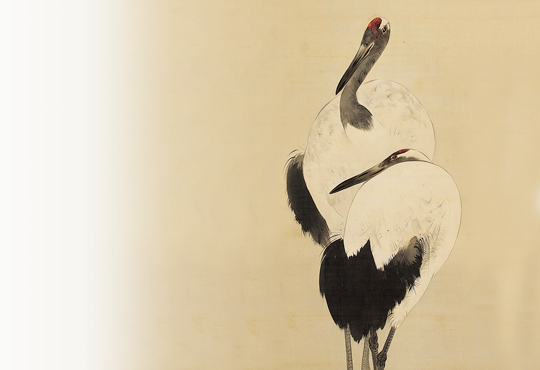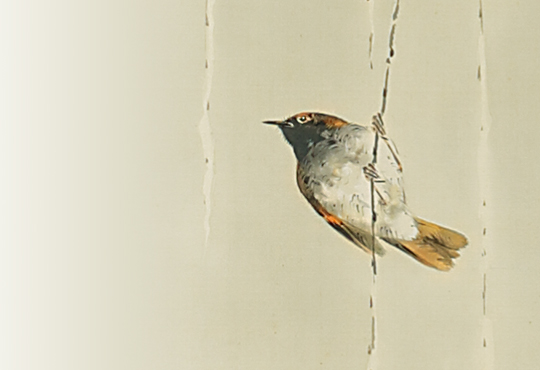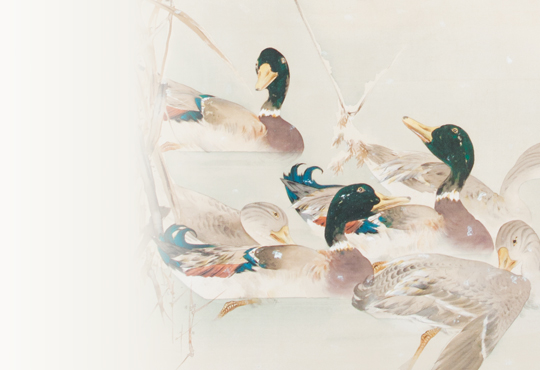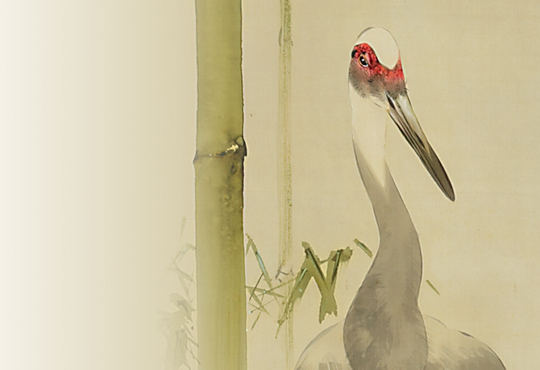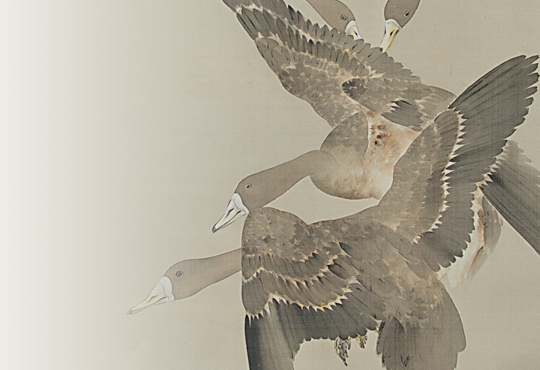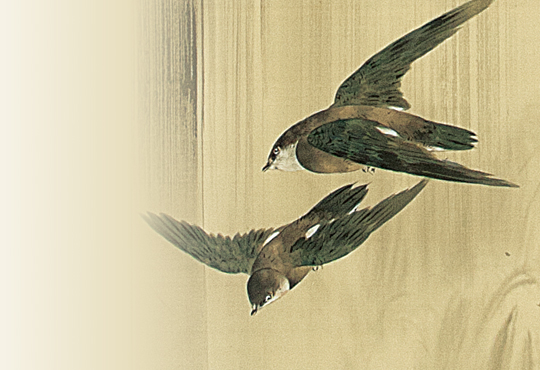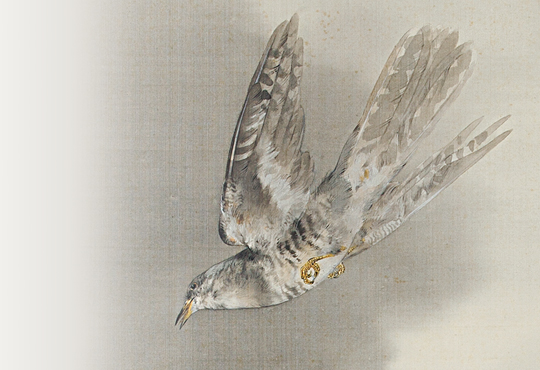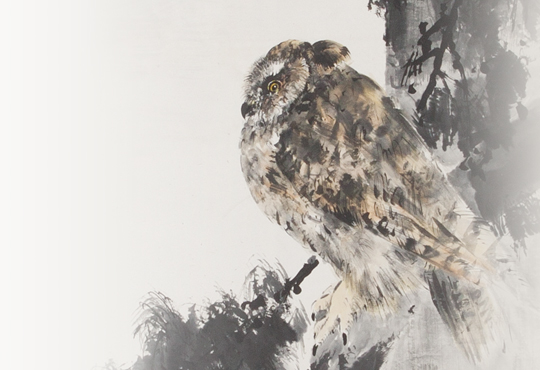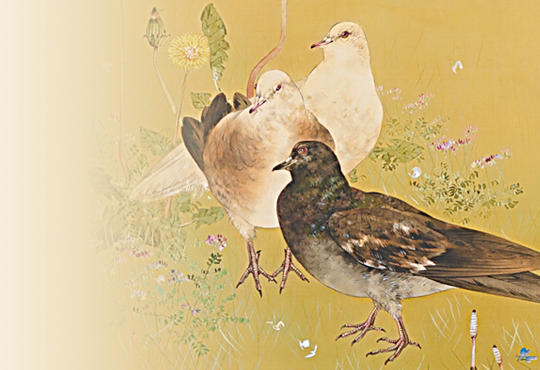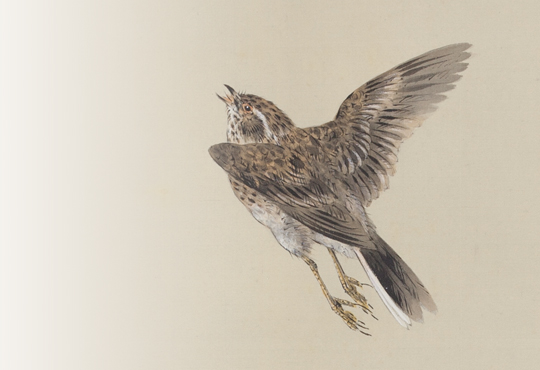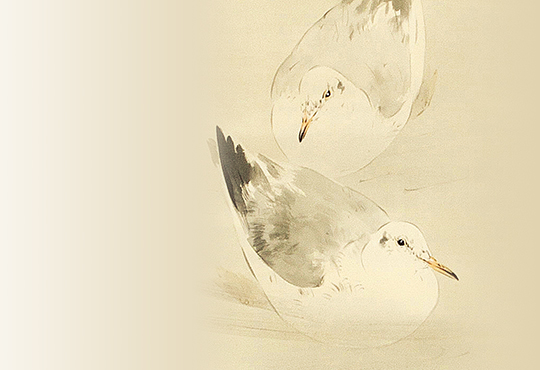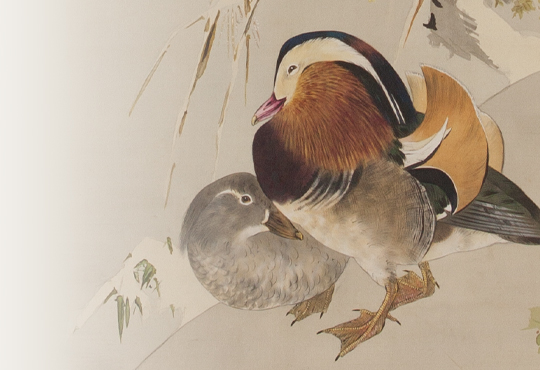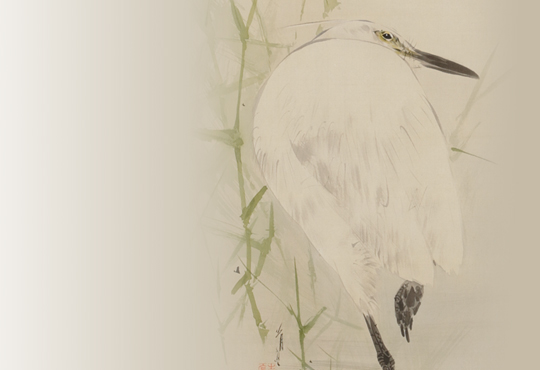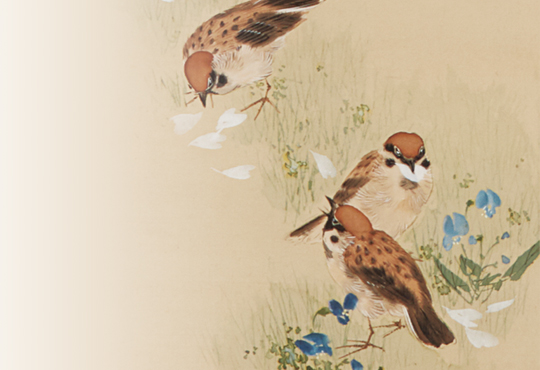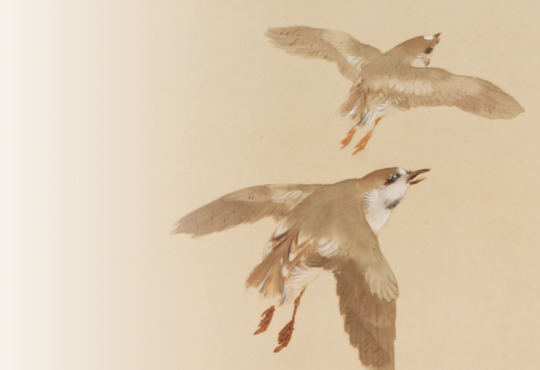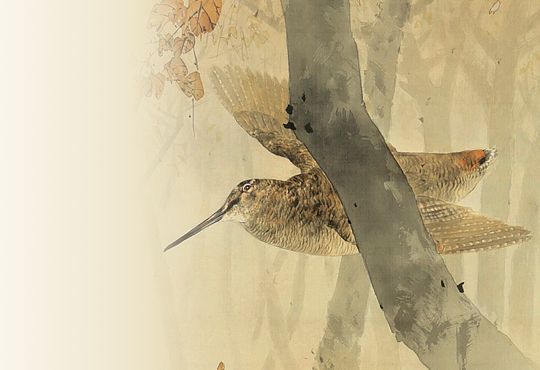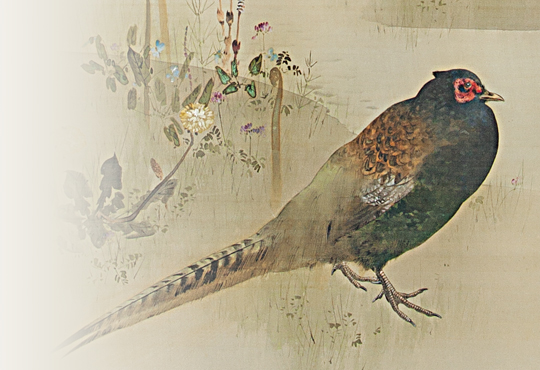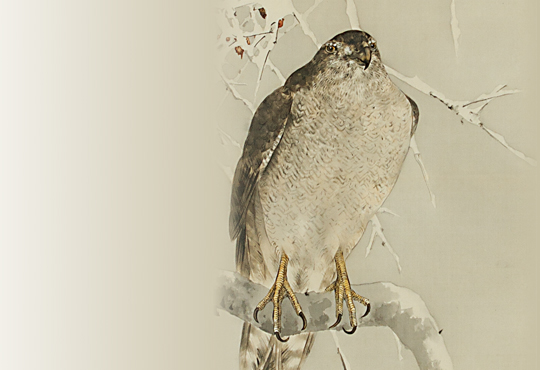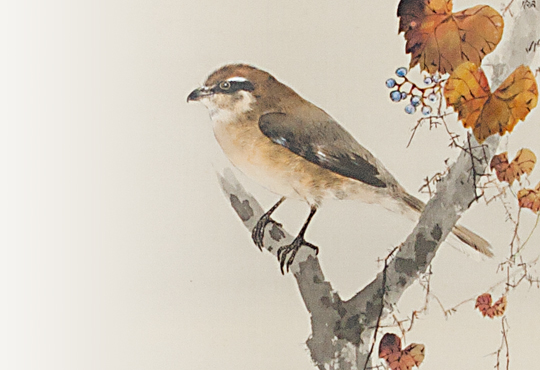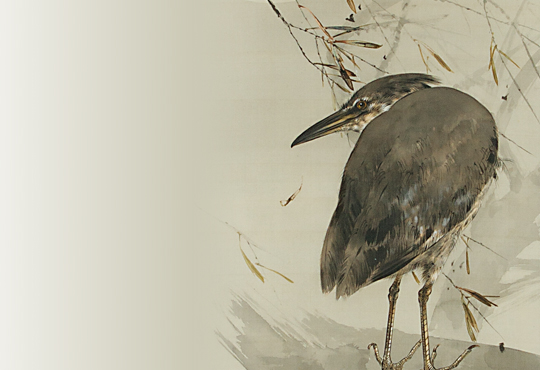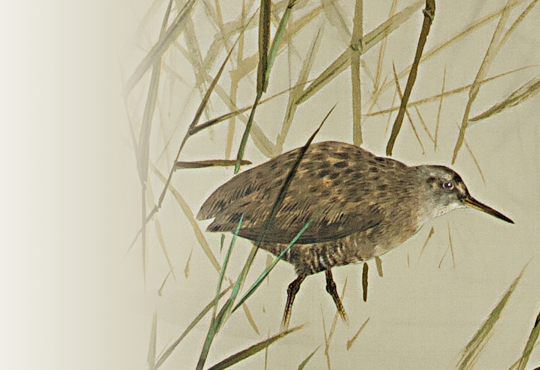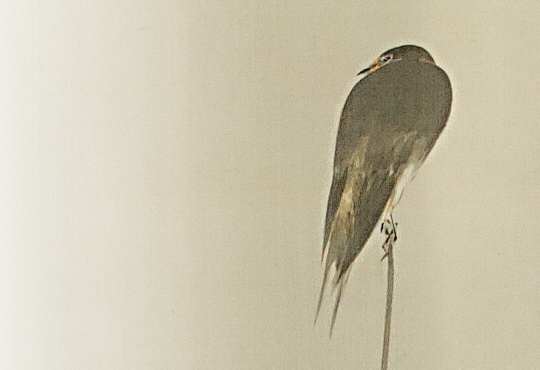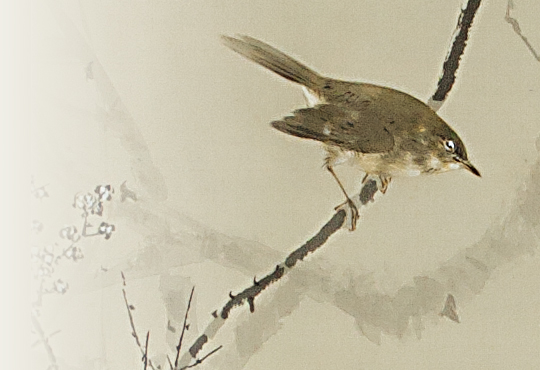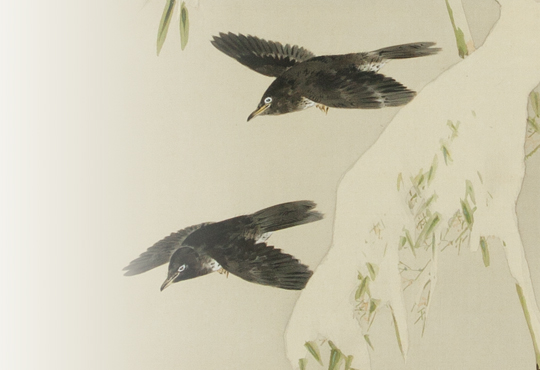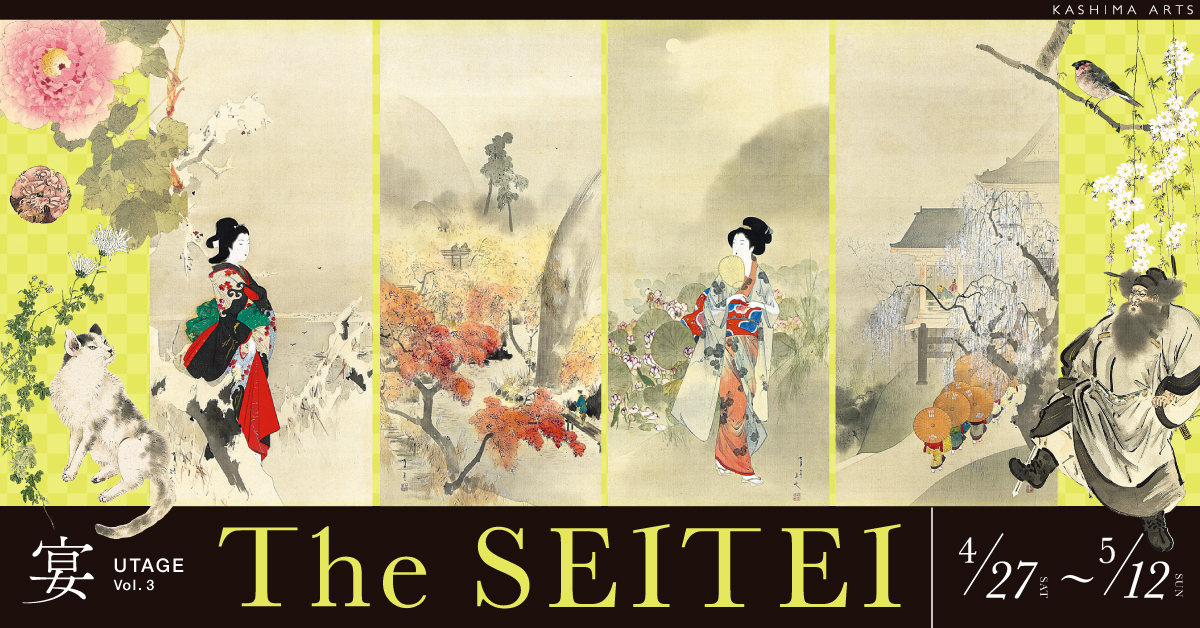Diptych, color on silk
with a box signed by the artsit
vol.20 Orange over Blue: Diptych of Willows and White Chrysanthemums
At first sight, the work appears simple. Juxtaposing abstract and figurative aesthetics, a single stroke is used to depict a willow branch as twigs and leaves are painted with delicate detail in the foreground. A small orange bird perches on the branch and, with his head raised ever so slightly, he glazes at us with his left eye. As the viewer and the bird’s lines of sight intersect, the work seals this momentary encounter. A work so fascinating, I find difficulty separating my gaze from his.
This small bird is the Daurian Redstart (Phoenicurus auroreus, body length: 14cm) and it is often found around the temperate regions of East Asia. In Japan, it is known mainly as a winter bird and, recently, they tend to breed around areas like the Nagano prefecture. Their population is smaller in number around Northern Japan, and areas with snowfall, but they are relatively common in other areas. They live around the rural villages and farmlands, and they are common birds that can be encountered in urban parks, shrine forests, and even in the gardens of homes.
Above all, their best trait is their appearance. With their large head and eyes, small body and beak, and subtle long tail; their figure looks exactly the way you would expect a small cute bird to look. The color of their feathers differs greatly between the sexes, with females colored mainly light brown, with bright orange in only a part of their waist and tail. Indeed, their cute faces and chic feathers makes them rather “fashionable ladies”. In contrast, the males are flamboyant. They have a silver head, a black face and wings, an orange belly, waist, and tail, and noticeable large white spots on their wings. Their appearance is akin to “dressed up Japanese pop idols,” with their silver hair, black jackets and orange suit pants. Featured in numerous paintings, the male Daurian Redstart seems to inspire many artists. Noteworthy works include Hasegawa Tohoku’s “Ebisu Daikoku Flower and Bird Painting” (Kyoto National Museum, Kyoto) and Hishida Shunso’s “Ochiba” (Eisei Bunko Museum, Tokyo). Seitei, too, seemed to be fond of the bird and, in addition to this work, featured a realistic depiction of the male Daurian Redstart in “Cherry Blossom and Flycatcher” (Saita Memorial Museum, Tokyo).
The Daurian Redstart, alongside the Japanese Robin, the Siberian Blue Robin, the Red-flanked Bluetail, and the Common Stonechat are all categorized as small-sized thrush. In the past, they were also grouped with large-sized thrush, i.e. the Japanese Thrush and the Scaly Thrush. Currently, they have been recategorized into the species of Old World flycatchers, which includes birds like the Blue-and-white Flycatcher and Narcissus Flycatcher. Like the Daurian Redstart, many male Old World flycatchers have vibrant colors. The Japanese Robin and Mugimaki Flycatcher are bright orange, the Scaly Thrush and Narcissus Flycatcher are bright yellow, and the Blue-and-white Flycatcher, Siberian Blue Robin, and Red-flanked Bluetail have brilliant shining colors. Predictably, they are all very popular with bird lovers.
Out of all the Old World flycatchers, which species did Seitei choose to depict? Searching through the images found in “Watanabe Seitei: The glory of Bird and Flower Painting” (published by Tokyo Bijyutsu), “Kachoreisan Watanabe Seitei・Suiha…” (published by Saita Memorial Museum, Tokyo), and other visual archives of his works in found in books and on the internet, I tried to pinpoint all the Old World flycatchers he depicted. While there were not too many relevant works, I was able to find several small-sized thrushes, like the Daurian Redstart, the Japanese Robin, and the Ryukyu Robin, and several large-sized thrushes, like the Dusky Thrush, the Pale Trush, and the Japanese thrush. What these species shared was that, to my discovery, they were composed mainly of three colors: white, black, and orange. On the other hand, birds with other colors, especially those of the blue variety (i.e. the Blue-and-white Flycatcher and the Red-flanked Bluetail), are probably the most interesting subjects to depict- but I am yet to encounter any of these birds in his work. What could this color bias mean?
I suspect it was not that Seitei preferred white, black, and orange colors but, rather, that he avoided blue. Like red, blue is a strong color. Even a small amount can overwhelm the composition and draw too much attention from the viewer. While its aesthetic appeal is tempting, the color is overwhelming and hard to control. Considering Seitei’s understated aesthetic, flashy blues would have been far too overwhelming. Nonetheless, this do not mean Seitei did not use blue. In fact, he would use blue as an auxiliary color- to make other colors stand out- and would respectively paint flowers, like hydrangea and morning glory, in strong blues. However, in painting birds, as I mentioned in vol.13 with the Mandarin Duck, I believe Seitei’s aversion of highly noticeable blues was intentional. Thus, maybe, he intentionally avoided painting small blue birds.
Of course, this is all my own conjecture. Perhaps there are paintings he made of small blue birds and maybe they were well known in the art world. Perhaps my conjecture was wrong from the start and, therefore, has already failed. But that is fine with me. Because if Seitei did paint a small blue bird, it would with no doubt be very wonderful. And if being wrong means being able to see it with my own eyes then I do not mind.
Author : Masao Takahashi Ph.D. (Ornithologist)
Dr. Masao Takahashi was born 1982 in Hachinohe (Aomori prefecture) and graduated from Rikkyo University’s Graduate School of Science. Dr. Takahashi specializes in behavioral ecology and the conservation of birds that inhabit farmlands and wet grasslands. Focusing on the relation between birds and art, he has participated in various museum and gallery talks.
